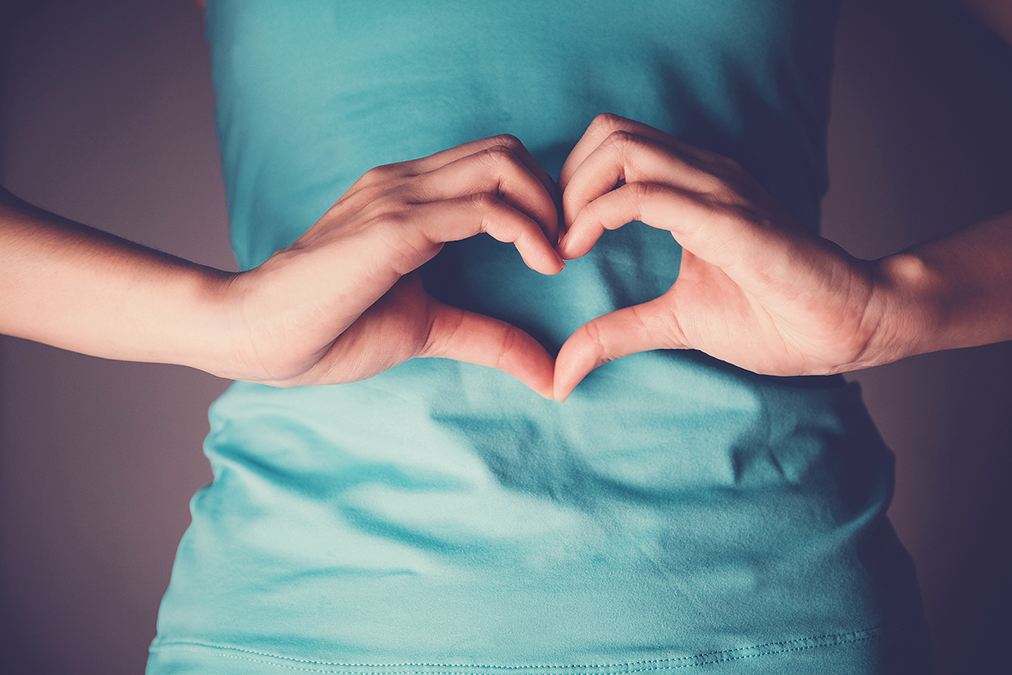 In recent years, researchers have established that people with non-alcoholic fatty liver disease (NAFLD) have intestinal bacteria that are different from those in healthy people.
In recent years, researchers have established that people with non-alcoholic fatty liver disease (NAFLD) have intestinal bacteria that are different from those in healthy people.
In a new study published in The American Journal of Gastroenterology, a group of researchers thought outside the box to develop a new treatment method for NAFLD—starting with the guts.
To a large extent, the composition of one’s gut bacteria is caused by one’s diet, so the problem stems from the consumption of too much fat and sugar.
This is relevant to NAFLD because gut bacteria regulate what nutrients can be absorbed from food in the gastrointestinal tract.
Moreover, the intestines send signals to other organs that are meant to participate in the metabolism of food, like the liver; bacterial overgrowth is a common disruptor of these signals.
Not only are the gut bacteria of people with NAFLD different; NAFLD also results in permeable intestinal walls. This means that bacteria and the toxic byproducts of those bacteria and digestion can leak into the rest of these people’s bodies, their bloodstreams, and organs like the liver in the abdominal cavity that surrounds the intestines.
These toxic chemicals have been linked to a wide variety of disorders including diabetes, depression, multiple sclerosis, cancer, obesity, systemic inflammation, autoimmune diseases, and (of course) NAFLD.
This prompted the authors of the new study to investigate whether gut permeability and liver fat could be reduced by implanting the feces of healthy people into patients with NAFLD.
They recruited 21 NAFLD patients from London Health Sciences Centre and St. Joseph’s Health Care London.
The researchers divided the subjects into an experimental group that received a fecal transplant from a healthy person and a placebo group that received a transplant of their own feces.
If you wonder how the transplant is performed, it happens via an endoscopy, i.e., a long instrument that is inserted through the anus and that delivers the fecal matter to the small intestine. Hence, no surgery.
After this procedure, they followed the patients for six months to investigate whether the patients’ gut bacteria changed, whether their intestinal permeability improved, whether the amount of fat in their livers decreased, and whether there was an improvement in their insulin resistance.
After six months, there was no change in their liver fat and insulin resistance, but their gut bacteria were substantially changed, and their gut permeability had improved significantly.
While researchers hoped that this procedure would reduce liver fat as well, it is still possible that liver fat would have decreased if the observation period had been longer.
But the fact that a fecal transplant can make our intestinal walls less permeable does mean that it might serve as a treatment in the early stages of NAFLD and in the treatment of many other diseases.
Rather than undergoing fecal transplant, which is a minor but invasive medical procedure, why not make a few changes to your diet that actually change your gut bacteria and therefore reduce the symptoms of NAFLD?

 Multiple Sclerosis
Multiple Sclerosis Banishing Bronchitis
Banishing Bronchitis Gum Disease Gone
Gum Disease Gone Overcoming Onychomycosis
Overcoming Onychomycosis Neuropathy No More
Neuropathy No More The Prostate Protocol
The Prostate Protocol Brain Booster
Brain Booster
 Ironbound
Ironbound
 Solution for Shingles
Solution for Shingles
 The Bone Density Solution
The Bone Density Solution
 The Ultimate Healing Protocol
The Ultimate Healing Protocol
 The Parkinson's Protocol
The Parkinson's Protocol
 The Chronic Kidney Disease Solution
The Chronic Kidney Disease Solution
 Overthrowing Anxiety
Overthrowing Anxiety The Fatty Liver Solution
The Fatty Liver Solution The Hypothyroidism Solution
The Hypothyroidism Solution
 The End of Gout
The End of Gout The Blood Pressure Program
The Blood Pressure Program
 The Oxigized Cholesterol Strategy
The Oxigized Cholesterol Strategy
 Stop Snoring And Sleep Apnea Program
Stop Snoring And Sleep Apnea Program
 The Arthritis Strategy
The Arthritis Strategy The Vertigo & Dizziness Program
The Vertigo & Dizziness Program The 3-Step Diabetes Strategy
The 3-Step Diabetes Strategy Hemorrhoids Healing Protocol
Hemorrhoids Healing Protocol The Erectile Dysfunction Master
The Erectile Dysfunction Master Weight Loss Breeze
Weight Loss Breeze The IBS Program
The IBS Program The Insomnia Program
The Insomnia Program The Migraine and Headache Program
The Migraine and Headache Program The Neck Pain Solution
The Neck Pain Solution The Menopause Solution
The Menopause Solution The Ejaculation Master
The Ejaculation Master The TMJ Solution
The TMJ Solution The Acid Reflux Solution
The Acid Reflux Solution The Fibromyalgia Solution
The Fibromyalgia Solution The Psoriasis Strategy
The Psoriasis Strategy